Professional Tips for Making Your Own Compost
It’s easy to create a free supply of nutrient-rich soil for your garden – just follow this expert advice...
Amanda Pollard
19 June 2020
Senior Editor at Houzz UK and Ireland. Journalist and editor specialising in interiors and architecture.
Senior Editor at Houzz UK and Ireland. Journalist and editor specialising in interiors... More
Want to cut down on waste, save money and ensure your soil is healthy and sustainable? A great way to do it is to try your hand at making your own compost. If you’re wondering how to get started, these tips from professional gardeners on Houzz will tell you everything you need to know about setting up and maintaining a compost area in your outdoor space.
Professional advice from: Ben Renfrew of Fig Garden Design; Victoria Philpott of Victoria Philpott Gardens; Daniel Adiego-González of The Bloomsbury Gardener
Professional advice from: Ben Renfrew of Fig Garden Design; Victoria Philpott of Victoria Philpott Gardens; Daniel Adiego-González of The Bloomsbury Gardener
Which type of compost bin should I go for?
When it comes to choosing a compost bin, there are a number of things to think about. “The many different types of compost bins do varyingly effective jobs, but the key elements you need are air, moisture and heat [produced by the breakdown process],” Ben Renfrew says.
“There are so many options, such as plastic, wooden, tumbler and ‘hot’ compost bins,” Victoria Philpott adds. “It really depends on how much waste you want to compost, how much work you want it to be, and how long you’re willing to wait. For example, a ‘hot’ compost bin keeps the temperature in the pile higher, speeding up the process. It means you quickly have usable compost. A ‘tumbler’ compost bin makes turning your compost easier.”
Victoria recommends you consider the height of your bin and whether you can easily lift a shovel into it and reach in to turn the compost. This is also an important consideration when it comes to the lid, as you’ll need it to be big enough for the shovel if you don’t want to do it by hand.
Material is also a key factor in your choice, according to Victoria. “Dark plastic bins will absorb heat, which will speed up the decomposition process,” she says. “They are also smaller, so well suited to smaller gardens. Wooden bins can be larger in size and the larger the pile of material, the higher the temperature it can reach, speeding up decomposition.”
If you have the space, Ben recommends a larger compost bin, as it can be frustrating when it becomes full before you’ve produced anything. He recommends a three-section compost bin, as this allows you to fill one bin while turning another in rotation.
When it comes to choosing a compost bin, there are a number of things to think about. “The many different types of compost bins do varyingly effective jobs, but the key elements you need are air, moisture and heat [produced by the breakdown process],” Ben Renfrew says.
“There are so many options, such as plastic, wooden, tumbler and ‘hot’ compost bins,” Victoria Philpott adds. “It really depends on how much waste you want to compost, how much work you want it to be, and how long you’re willing to wait. For example, a ‘hot’ compost bin keeps the temperature in the pile higher, speeding up the process. It means you quickly have usable compost. A ‘tumbler’ compost bin makes turning your compost easier.”
Victoria recommends you consider the height of your bin and whether you can easily lift a shovel into it and reach in to turn the compost. This is also an important consideration when it comes to the lid, as you’ll need it to be big enough for the shovel if you don’t want to do it by hand.
Material is also a key factor in your choice, according to Victoria. “Dark plastic bins will absorb heat, which will speed up the decomposition process,” she says. “They are also smaller, so well suited to smaller gardens. Wooden bins can be larger in size and the larger the pile of material, the higher the temperature it can reach, speeding up decomposition.”
If you have the space, Ben recommends a larger compost bin, as it can be frustrating when it becomes full before you’ve produced anything. He recommends a three-section compost bin, as this allows you to fill one bin while turning another in rotation.
How should I prepare my compost bin?
Victoria explains that compost bins should be laid straight onto the bare earth, with some brown, woody waste material at the bottom to help with drainage.
“You could add shredded paper, a layer of grass clippings, autumn leaves – anything that allows the worms to get into the compost,” Ben says.
“If your composter doesn’t already have a lid, you can use an old piece of carpet or a sheet of plastic or wood – anything that will completely cover the pile to help keep the heat in,” Victoria adds.
Ben adds that laying a weed control membrane on top, or something that lets the rain get into your compost, will help the microorganisms break it down.
Once this is all in place, Ben recommends you just start adding to it. “Try to alternate between soft and woody materials,” he says. “Putting in some nitrogen-rich material, such as manure, will help to kick-start the composting process.”
To see more from any of the designers whose photos are featured in this article, click on the image, then on Learn More if you’re in the app, and follow the links to the professional’s profile.
Victoria explains that compost bins should be laid straight onto the bare earth, with some brown, woody waste material at the bottom to help with drainage.
“You could add shredded paper, a layer of grass clippings, autumn leaves – anything that allows the worms to get into the compost,” Ben says.
“If your composter doesn’t already have a lid, you can use an old piece of carpet or a sheet of plastic or wood – anything that will completely cover the pile to help keep the heat in,” Victoria adds.
Ben adds that laying a weed control membrane on top, or something that lets the rain get into your compost, will help the microorganisms break it down.
Once this is all in place, Ben recommends you just start adding to it. “Try to alternate between soft and woody materials,” he says. “Putting in some nitrogen-rich material, such as manure, will help to kick-start the composting process.”
To see more from any of the designers whose photos are featured in this article, click on the image, then on Learn More if you’re in the app, and follow the links to the professional’s profile.
What should I add to my compost bin?
“To get good compost, you need to put in a mix of hard and soft materials,” Ben says. “You want your compost bin to cater to the tastes of as many microorganisms and worms as you can – too much of any one thing can cause problems and slow or stop the process.”
The professionals recommend adding garden waste, such as lawn clippings, prunings and vegetable waste. “It’s best to mix lawn clippings with other stuff to avoid compacted layers that will struggle to decompose evenly,” Daniel Adiego-González says. “Every so often, I add layers of cardboard to improve aeration.”
“Soft green waste should make up to half of the compost bin,” Ben says. “The rest can be woody materials, such as plant clippings and wood chips, but avoid putting in any very large branches, as these will take a long time to rot.
“Sticks are always a problem, as they take far longer to break down than other organic matter,” he continues. “It’s better to use your woody stems to create a woodpile, if you have the space. This can attract beneficial insects to the garden and be a home to many creatures that need somewhere to hibernate.”
“To get good compost, you need to put in a mix of hard and soft materials,” Ben says. “You want your compost bin to cater to the tastes of as many microorganisms and worms as you can – too much of any one thing can cause problems and slow or stop the process.”
The professionals recommend adding garden waste, such as lawn clippings, prunings and vegetable waste. “It’s best to mix lawn clippings with other stuff to avoid compacted layers that will struggle to decompose evenly,” Daniel Adiego-González says. “Every so often, I add layers of cardboard to improve aeration.”
“Soft green waste should make up to half of the compost bin,” Ben says. “The rest can be woody materials, such as plant clippings and wood chips, but avoid putting in any very large branches, as these will take a long time to rot.
“Sticks are always a problem, as they take far longer to break down than other organic matter,” he continues. “It’s better to use your woody stems to create a woodpile, if you have the space. This can attract beneficial insects to the garden and be a home to many creatures that need somewhere to hibernate.”
What should I do to help the process along?
“It’s important to keep your compost pile aerated to give oxygen to the organisms that break down the waste materials,” Victoria says. “The best way is by turning or digging your compost frequently – ideally at least once a month. It’s hard work, but it’s essential for allowing air to get through the whole pile.
“If it’s too physically demanding, poking holes with a broom handle can help, as can putting in coarse material, such as straw, to create air pockets throughout the pile,” she continues. “It also needs moisture, so in dry weather it should be watered.”
“There are many compost ‘accelerators’ on the market, but ultimately these are a mix of chemicals including ammonia,” Ben says. “The cheapest source of ammonia is urine – it really does accelerate the breakdown.”
“It’s important to keep your compost pile aerated to give oxygen to the organisms that break down the waste materials,” Victoria says. “The best way is by turning or digging your compost frequently – ideally at least once a month. It’s hard work, but it’s essential for allowing air to get through the whole pile.
“If it’s too physically demanding, poking holes with a broom handle can help, as can putting in coarse material, such as straw, to create air pockets throughout the pile,” she continues. “It also needs moisture, so in dry weather it should be watered.”
“There are many compost ‘accelerators’ on the market, but ultimately these are a mix of chemicals including ammonia,” Ben says. “The cheapest source of ammonia is urine – it really does accelerate the breakdown.”
How long until I have usable compost?
“An open bin will take around a year to turn waste into compost,” Ben says. “Some of the more techy hot compost bins can turn it around much quicker.”
The timeframe is also affected by what you add to your compost bin, Victoria explains. “The more woody material can take around three years to break down properly; for the softer plant material, it can be less than a year. You’ll know it’s ready when it’s broken down and looks like soil,” she says.
Daniel has both systems in his garden and says, “With the traditional one, I leave the compost for a whole year. I use this compost for mulching the flowerbeds in early spring. With the hot bin, you can have ready compost in six to eight weeks. I mostly use this for potting.”
“An open bin will take around a year to turn waste into compost,” Ben says. “Some of the more techy hot compost bins can turn it around much quicker.”
The timeframe is also affected by what you add to your compost bin, Victoria explains. “The more woody material can take around three years to break down properly; for the softer plant material, it can be less than a year. You’ll know it’s ready when it’s broken down and looks like soil,” she says.
Daniel has both systems in his garden and says, “With the traditional one, I leave the compost for a whole year. I use this compost for mulching the flowerbeds in early spring. With the hot bin, you can have ready compost in six to eight weeks. I mostly use this for potting.”
Can I use half-ready compost?
“You can, but I wouldn’t recommend it,” Daniel says. “From my understanding, the decomposing process requires carbon (C) and nitrogen (N). If you add your unfinished compost to the soil, there will be a period in which the unfinished compost will take C and N from the soil to decompose itself. Once it’s decomposed, it will add the nutrients back to the soil. This means the levels of C and N will decrease for a period, so there will be less available for the plants.”
Need help with your outdoor plans? Find garden designers in your area.
“You can, but I wouldn’t recommend it,” Daniel says. “From my understanding, the decomposing process requires carbon (C) and nitrogen (N). If you add your unfinished compost to the soil, there will be a period in which the unfinished compost will take C and N from the soil to decompose itself. Once it’s decomposed, it will add the nutrients back to the soil. This means the levels of C and N will decrease for a period, so there will be less available for the plants.”
Need help with your outdoor plans? Find garden designers in your area.
How do I avoid pests such as rats?
Ben recommends avoiding any cooked waste. “Rats are drawn to the smell of decaying food, so if your compost bin is well balanced and not smelly, the rats will be less of an issue,” he says. “Thin layers of grass clippings and shredded paper help to keep a healthy compost pile.”
“By making sure your compost is well mixed, you’ll reduce the smell of the food waste, which may attract pests,” Victoria adds. “Also, make sure the pile is moist to put off any animals looking for a nice dry place to shelter.”
Ben recommends avoiding any cooked waste. “Rats are drawn to the smell of decaying food, so if your compost bin is well balanced and not smelly, the rats will be less of an issue,” he says. “Thin layers of grass clippings and shredded paper help to keep a healthy compost pile.”
“By making sure your compost is well mixed, you’ll reduce the smell of the food waste, which may attract pests,” Victoria adds. “Also, make sure the pile is moist to put off any animals looking for a nice dry place to shelter.”
Can I add compostable bags from my food waste caddy?
“I used to put them in, but they don’t decompose completely,” Daniel says. “After a year, you still have some bags around and, when mulching the flowerbeds, they look awful. You can use one bag in your caddy for easy cleaning, but re-use it as much as you can and don’t put it into the compost.”
Tell us…
Are you planning to make your own compost? Were these tips helpful? Share your thoughts in the Comments.
“I used to put them in, but they don’t decompose completely,” Daniel says. “After a year, you still have some bags around and, when mulching the flowerbeds, they look awful. You can use one bag in your caddy for easy cleaning, but re-use it as much as you can and don’t put it into the compost.”
Tell us…
Are you planning to make your own compost? Were these tips helpful? Share your thoughts in the Comments.
Related Stories
Gardening
How Do I Create a Drought-tolerant Garden?
By Kate Burt
As summers heat up, plants that need less water are increasingly desirable. Luckily, there are lots of beautiful options
Full Story
Garden Inspiration
5 Inspiring Before and After Garden Transformations
Check out what a difference designers have made to these once dull plots, visually expanding spaces and creating privacy
Full Story
Garden Inspiration
How to Disguise Rubbish and Recycling Bins Outside Your Home
Need to hide unsightly bins in your garden or driveway? Take a look at these clever ideas for inspiration
Full Story
Garden Tours
Garden Tour: A Bare Roof Terrace Becomes a Pretty, Sociable Space
By Kate Burt
A retired couple got help transforming their large rooftop into a gorgeous, welcoming, multi-functional retreat
Full Story
Garden Planning
Can I Have a Lawn-free Garden That’s Kind to the Environment?
Try these tips to help you plan a garden without grass that’s still leafy and eco-friendly
Full Story
Garden Inspiration
7 Things People Don’t Tell You About Designing a Garden
Uncover some of the more surprising elements of planning a garden redesign
Full Story
Garden Inspiration
9 Ways to Create a More Sustainable Garden
Simple, effective ideas for reducing your environmental footprint and creating a beautiful garden
Full Story
Garden Inspiration
18 Soul-soothing Green Roofs
By Kate Burt
Whether you choose sedum, wildflowers, or a mix, a living roof can be a beautiful and biodiverse addition to your home
Full Story
Garden Inspiration
9 Ways to Enjoy Colour in Your Garden All Year Round
By Kate Burt
However your garden grows, you can add colour with hardscaping, furniture and accessories
Full Story
Garden Planning
How to Identify Your Garden Design Style
Before starting an outdoor renovation, take the time to determine which garden style suits your taste and site
Full Story


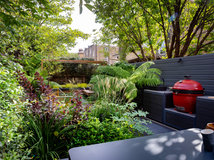
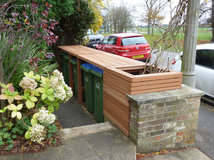
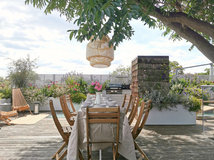
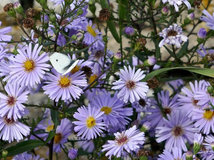
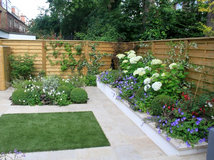
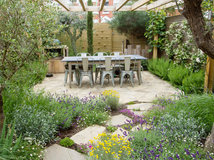



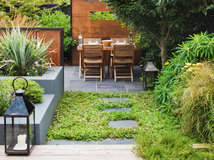

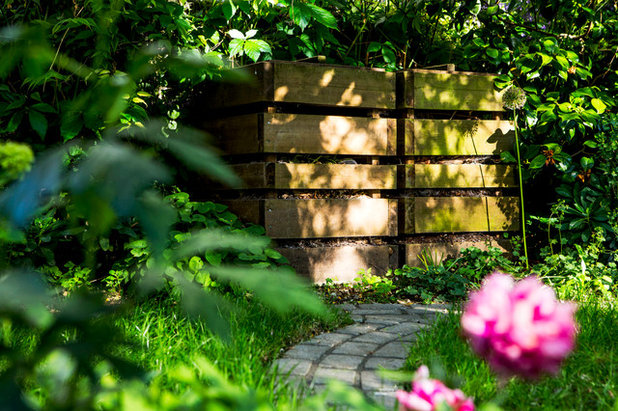
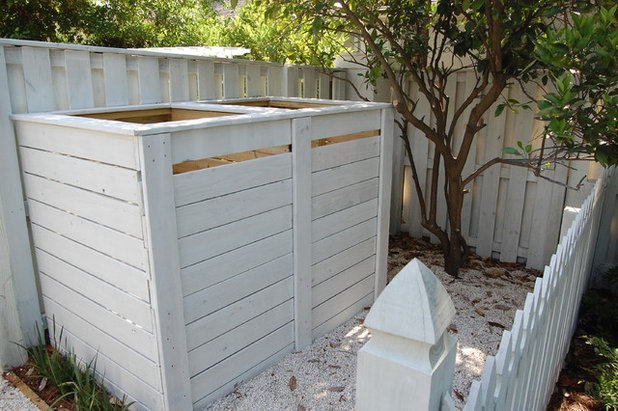
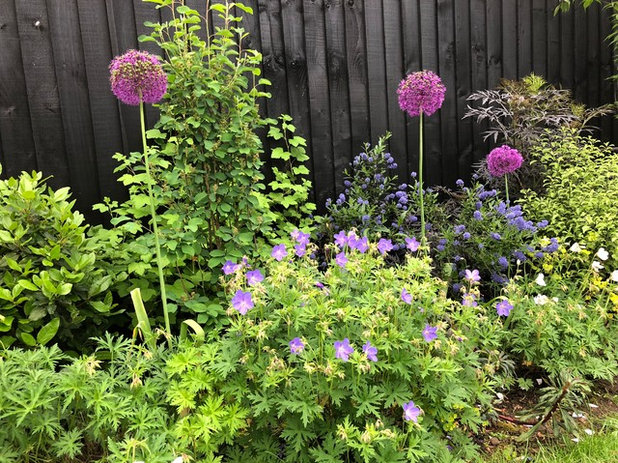
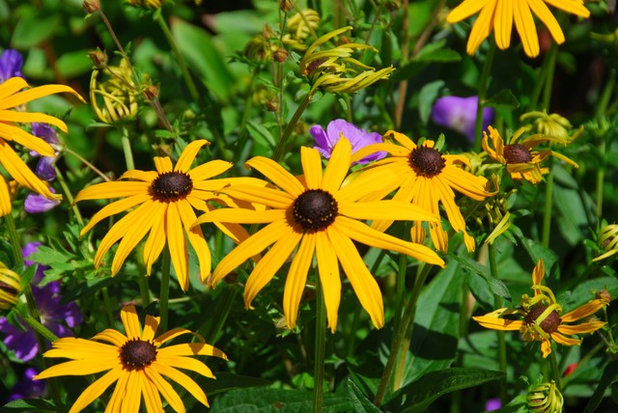
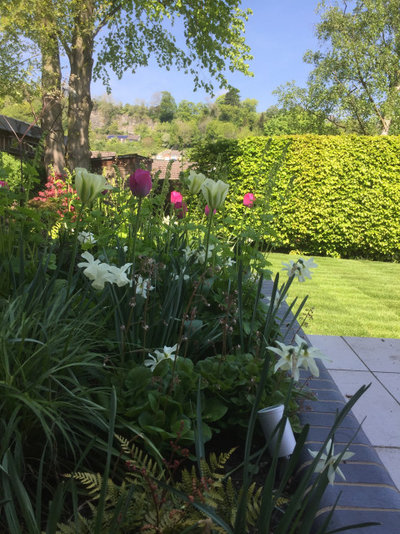
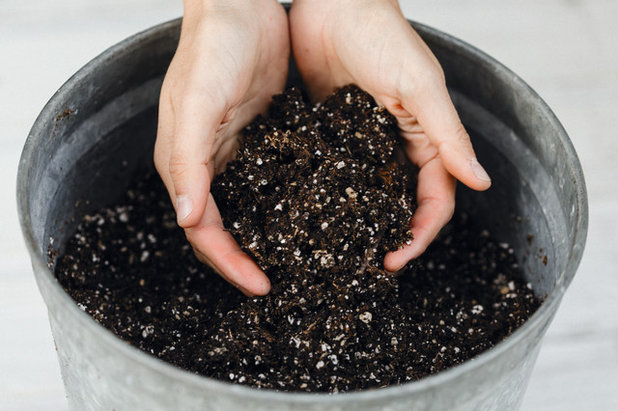
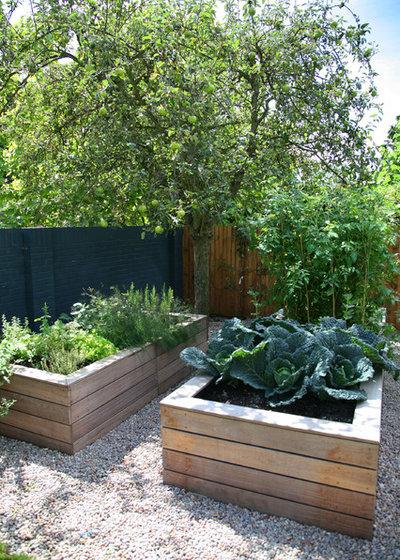
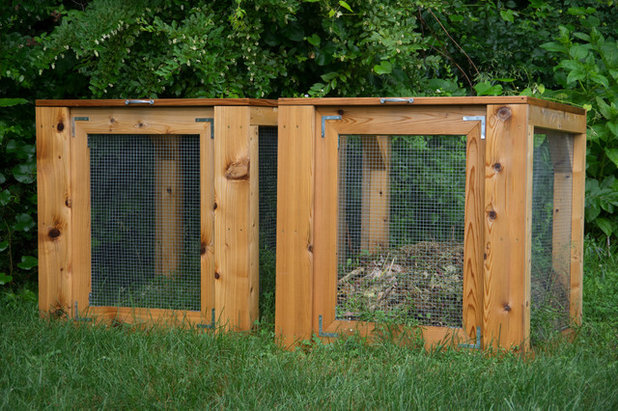

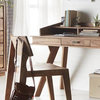

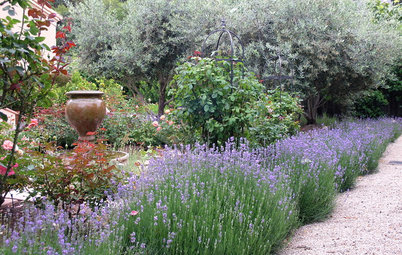
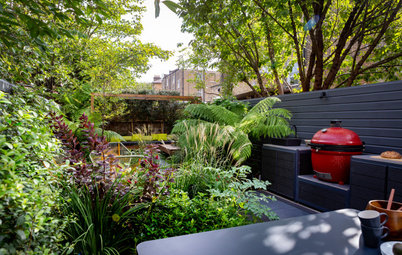

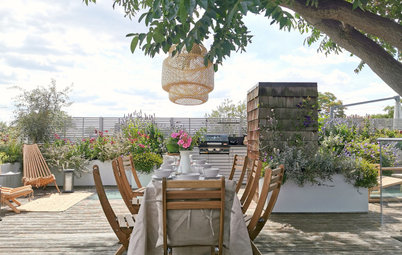
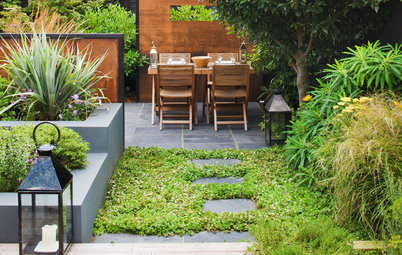
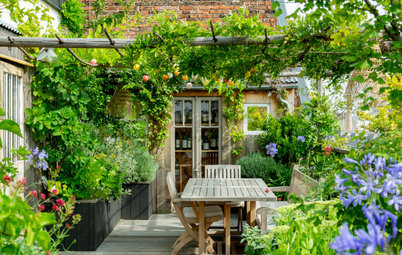
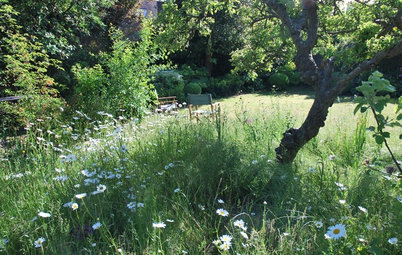
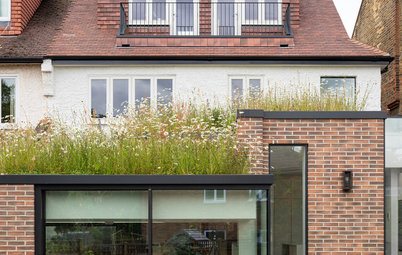
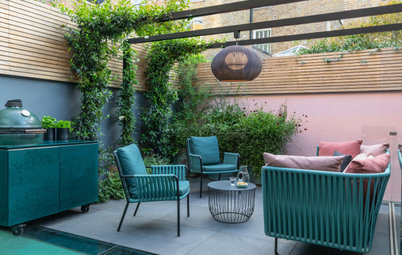
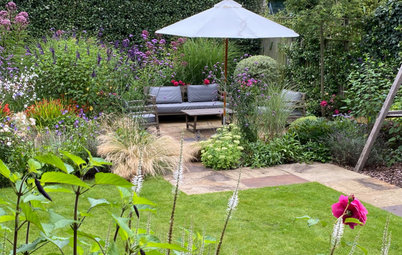
Ew I hate compost it’s smelly
Two points I think were missed is that shredding compost meterial, or mowing it, makes the process quicker, and compost bins need to be sturdy. We've had foxes eat through plastic bins and thin wooden ones don't last long. For many years I copied the design on kits I say at garden centres, using pressure treated timber that I cut notches eack end, top and botton, so the planks could slot into each other. Eventually the timber rots (maybe 5 to 10 years). Last time it was going to cost a lot of money to reoplace the three, cubic meter bins I had. Then I found https://agamemnon-timber.co.uk who supply kits to make your own slot-together bins. All made from thick, strong, treated timber. Expensive but they work extremely well. Our garden makes 3 cubic meters of fine compost every year.
Whoops! A few smelling pistakes there but I'm sure you can red it rite.